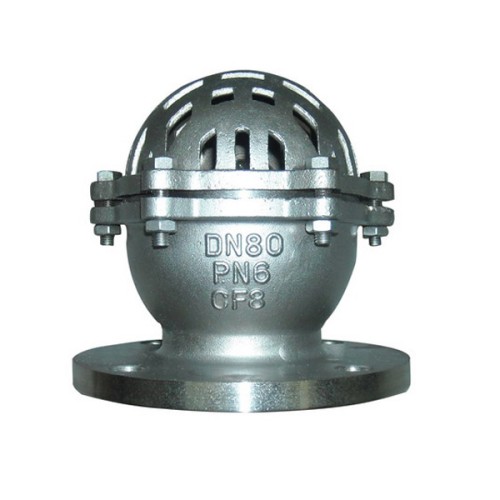Understanding the Functionality and Applications of Bellows Expansion Joints in Pipelines
Understanding Bellows Expansion Joints Essential Components for Piping Systems
Introduction
In the field of engineering, particularly in piping systems, the management of thermal expansion and contraction is a critical concern. One of the most effective solutions for this challenge is the use of bellows expansion joints. These components are specially designed to absorb movement caused by thermal expansion, vibrations, and other stresses within piping systems. This article will delve into the functionality, types, applications, and advantages of bellows expansion joints.
What are Bellows Expansion Joints?
Bellows expansion joints are flexible piping components that can compensate for a range of movements in piping systems, including axial, lateral, and angular displacements. They are typically constructed from metallic or non-metallic materials, with the most common being stainless steel due to its durability and corrosion resistance. The primary design feature of a bellows expansion joint is its bellows, a convoluted section that can expand or contract while maintaining the integrity of the piping system.
Functionality
The key function of bellows expansion joints is to accommodate the thermal expansion and contraction of pipes that occur due to temperature fluctuations. As fluids are heated, the pipes expand; conversely, when cooled, they contract. If not properly managed, this movement can lead to excessive stress on the joints, potentially causing leaks, ruptures, or other failures in the system. Bellows expansion joints absorb these movements, preventing damage and ensuring the longevity and reliability of the piping system.
Types of Bellows Expansion Joints
There are several types of bellows expansion joints, each designed for specific applications and movements
1. Axial Expansion Joints These joints allow for movement along the axis of the pipe. They typically feature a single bellows that accommodates axial compression and extension.
2. Lateral Expansion Joints Designed to absorb lateral movement, these joints can accommodate shifts in the plane of the pipe. They usually consist of two bellows, allowing for greater flexibility.
3. Angular Expansion Joints These joints manage angular displacement, making them suitable for applications where pipes intersect at angles. They can absorb both axial and lateral movements simultaneously.
4. Universal Expansion Joints These versatile components combine the functionalities of axial and lateral joints, allowing for multiple directions of movement. They consist of two bellows capable of accommodating various displacements.
bellows expansion joints

Applications
Bellows expansion joints find applications across a variety of industries, including
- Power Generation They are widely used in steam and gas pipelines to manage thermal expansions in power plants. - Chemical Processing Chemical plants utilize these joints to handle the expansion and contraction of corrosive fluids, maintaining system integrity.
- HVAC Systems In heating, ventilation, and air conditioning systems, bellows expansion joints help manage pipe movement due to temperature changes, ensuring efficient operation.
- Oil and Gas These components are essential in oil and gas pipelines, where they absorb dynamic movements caused by pressure changes and environmental factors.
Advantages
Using bellows expansion joints presents numerous benefits to engineering and piping systems
1. Reduced Stress By absorbing movements, bellows joints significantly reduce stress on the piping system, minimizing the risk of structural failure.
2. Longevity Properly installed bellows expansion joints can extend the lifespan of piping systems by preventing damage caused by thermal expansion and vibrations.
3. Versatility Available in various designs and materials, these joints can be customized to suit specific industrial needs and conditions, making them highly versatile.
4. Maintenance Reduction With a reduced risk of leaks and failures, the need for frequent maintenance is diminished, leading to lower operational costs.
Conclusion
In conclusion, bellows expansion joints are indispensable components in modern piping systems, offering robust solutions for managing thermal expansion and contraction. Their unique design allows for the accommodation of various movements, making them essential in diverse industries such as power generation, chemical processing, HVAC, and oil and gas. By reducing stress on piping systems and extending their longevity, bellows expansion joints contribute to enhanced reliability and efficiency, ensuring optimal performance in various engineering applications. Understanding and implementing these components is crucial for engineers and system designers aiming to achieve sustainable and effective piping solutions.
-
The Key to Fluid Control: Exploring the Advantages of Ball Valves in Industrial SystemsNewsJul.09,2025
-
The Versatile World of 1, 2, and 3 Piece Ball ValvesNewsJul.09,2025
-
Stainless Steel Ball Valves: The Ideal Choice for Efficient Flow ControlNewsJul.09,2025
-
Optimizing Fluid Control with Ball Float ValvesNewsJul.09,2025
-
Manual Gate Valves: Essential for Control and EfficiencyNewsJul.09,2025
-
Everything You Need to Know About Butterfly ValvesNewsJul.09,2025
-
The Versatility of Wafer Type Butterfly ValvesNewsJul.08,2025




